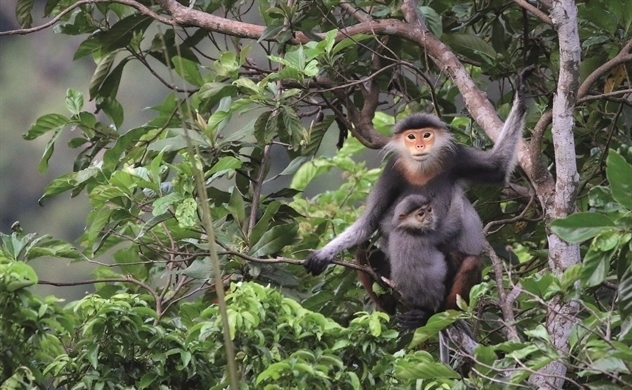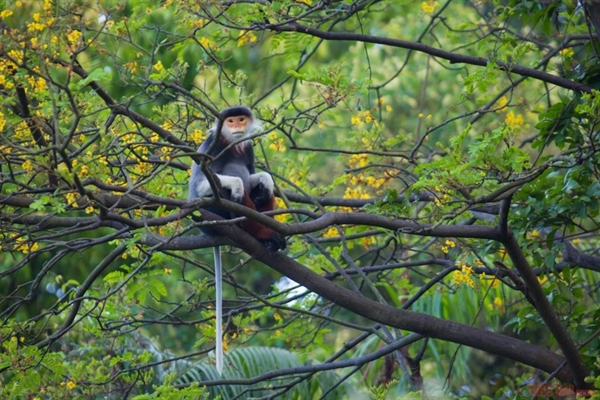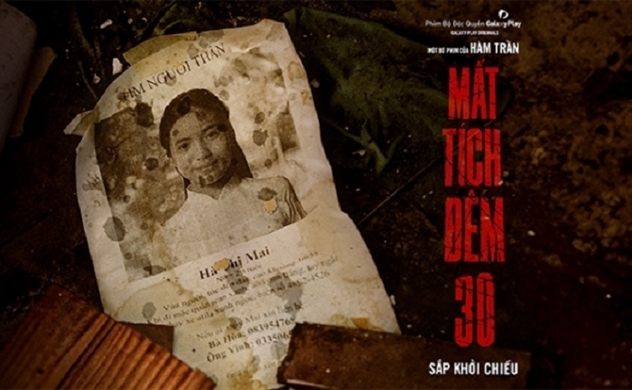Visiting brown-shanked doucs in the forest of Son Tra Peninsula

In 9 years of operation, GreenViet has organized 276 journeys for 3,100 participants.
At 5:45 in the morning in July, the early summer sun warms the eastern hills of the Son Tra peninsula with golden light. Vo Ho Que Anh, who was sitting in the front seat of a 7-seater car, smiled and said hello to the ranger at the barricade at the base of the mountain.
She then took the six guests in the back of the car into the protected area of the iridescent langur, also known as the brown-shanked douc, which is the most colorful primate in the world.
"I'm very confident today", Que Anh excitedly told the group of guests who had just gotten off the bus to walk along the uphill road in the middle of the 30 km distance from the foot of the mountain to the top. The delegation she led the previous morning met two langur families, a total of seven children, perched on a tree not far away. She hoped they were still around.
A typical trip to see langurs takes 3 hours and has 3 stops, with 2 of them being walks to find langurs. But the main trail for seeing langurs has been badly damaged by heavy rains since last year and hasn't been fixed yet. So, this trip to Que Anh can only lead people to find langurs on the big road across the sea to the top of Ban Co.
 |
| Photo: Nhan Dan |
There are only two visits to langurs during the day, from 5:30 a.m. and 2 p.m."Douc langurs feed when it's cool, and they nap like humans," explains Que Anh. When it is morning, the iridescent langurs move their branches in search of food, young leaves, or green fruits. With a jump up to 6 m, they sometimes move tens of kilometers a day to feed. Every day, moving to find food and play takes up nearly a third of their time. Daily activities of langur families usually include resting, eating, moving, and socializing.
The road to the mountain turns to the right, revealing a tree about 5 meters high growing on the side of the mountain facing the sea. Que Anh showed disappointment. The langur family she saw yesterday has not returned today. The group this morning had three little girls, still sleepy when their parents took them out of the car to look for langurs.
"There were also a few times when I took guests without seeing the langurs," Que Anh worried when the end of the walking journey was in sight. The delegation met the field corn with orange-red flowers on the side of the mountain, saw the red-tailed squirrel, and touched the langur's favorite fruit, a wild fig, but the langurs were still hiding somewhere.
 |
| Photo: Nhan Dan |
Langurs used to be part of the free nature experience program "I love Son Tra," which gave students and people of Da Nang a chance to learn about the nature of their own country. The good news is that tourists from inside and outside of Da Nang, especially foreign visitors, also want to try new things. Since 2018, GreenViet has set up more events that let people try new things for a fee. The money that was raised will still be used to help poor kids and teachers. GreenViet has been around for nine years and has set up 276 trips for 3,100 people.
A tree 10 meters from the road has a white tail. After the trek, Que Anh's party saw an adult langur munching leaves. The brown-shanked douc langur's tail doesn't curl, thus it hangs down. They pluck leaves to conceal themselves from danger. However, their large white tail cannot be disguised, thus the term "hidden head and open tail". The adult langur develops a beer belly from consuming about 1.8 kg of leaves daily.
The threat to animals protected by the Vietnam Red Book in Son Tra is the shrinking habitat. A few years ago, the danger was greater than ever when a 1,600-room master plan was approved by the Deputy Prime Minister. “Luckily, the context was right, and we successfully recommended stopping the construction according to the plan,” recalled Ms. Nguyen Thi Tinh, Manager of GreenViet's Nature Dance Education and Experience Center.
In 2017, the master plan for Son Tra National Tourist Area with 16 projects was announced. In the world, there are very few intact protected areas located next to a big city like Son Tra. By quantitative calculation, the scientific community has proven that the economic benefits of keeping Son Tra intact are equivalent to the benefits of building a restroom. The ecological benefits of protected areas are not taken into account.
_71059998.jpeg) |
| Photo: Nhan Dan |
GreenViet has helped stakeholders, including the government, realize the plan's unreasonableness, including scientists, nature enthusiasts, and the Danang Tourism Association. Many international and national seminars have been held. An online signature drive begins. Therefore, the petition to preserve Son Tra and create sustainable eco-tourism was granted.
Living only in Indochina, the brown-shanked douc langur is classified as endangered in the Vietnam Red Book and the IUCN Red List. A 2017 study by GreenViet revealed that Son Tra is home to more than 1,300 individuals of brown-shanked douc langur, which is also the most easily observed population in the wild. “In the wild, the brown-shanked douc langur is predicted to experience a population decline of more than 50% over the next 35 years within three reproductive life cycles due to habitat loss, poaching, and illegal trade," analyzed Mr. Tran Huu Vy, Director of GreenViet.
The brown-shanked douc langur, known as guppies, military monkeys, popes, concealed heads, and tails, wears a seven-colored tunic. Surveys and studies confirm The brown-shanked douc langur is found exclusively in the Truong Son mountain range in southern Laos, central Vietnam, and northeastern Cambodia's forest borders. Deforestation, encroachment on forest land, alteration of forest land use, and road building have split species populations.
As a very gentle species, langurs rarely fight. "Once, we witnessed the whole process of winning a langur's wife. Que Anh recalled the rare humorous moment when she witnessed a young langur burst into another langur's house to pull his wife away. “I was lucky to be accepted into GreenViet even though I was not a professional,” said the bachelor of English about being so fond of nature that she ran for a conservation organization a year earlier.
Same category news
-
Bich Phuong
Latest news
-
Huyen Hoang

 TIẾNG VIỆT
TIẾNG VIỆT 







_291615658.jpg)









